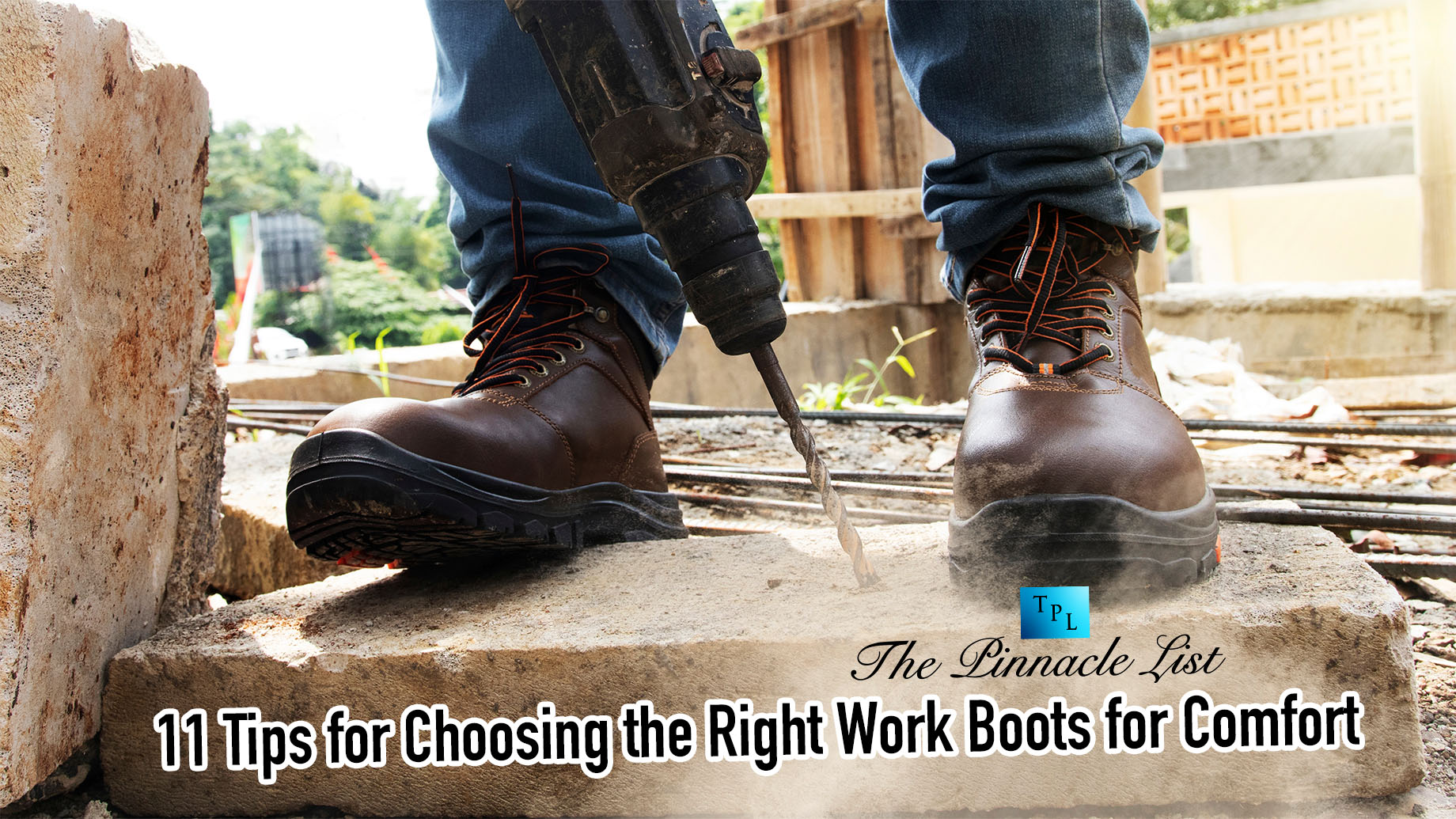
When it comes to work boots, comfort should always be a top priority. Whether you are spending long hours standing, walking, or working in challenging environments, having the right pair of boots can make a big difference.
But with lots of options available, it can be difficult to know where to start. In this article, you will learn the eleven tips that will help you choose the right work boots for comfort and keep your feet happy throughout your workday.
1. Know Your Work Environment
The first step in choosing comfortable work boots is understanding the environment you’ll be working in. Different jobs require different features. For example, if you work in a warehouse, you might need boots with good arch support and shock absorption.
However if you are in construction, waterproof and slip-resistant boots are important to keep you safe and dry. That is the reason why if you are going to assess your work environment, you can pick boots that meet your specific needs.
2. Focus on Proper Fit
Take note that a proper fit is essential for comfort. Boots that are too tight or too loose can cause blisters or even long-term foot problems. When trying on boots, make sure there is enough room in the toe area, but not too much. Your feet should feel snug in the heel without slipping. Make sure to wear the same socks you’ll wear at work when trying on it, as this can affect the fit.
3. Consider the Boot’s Material
Leather is durable and provides excellent support, but it can take time to break in. Synthetic materials, on the other hand, are often lighter and more flexible. There are many work boots that also come with breathable mesh lining to help your feet stay cool and dry. Additionally, you should choose a material that suits both the climate you work in and your need for comfort.
4. Check for Cushioning and Support
Keep in mind that comfortable work boots should provide cushioning for your feet, especially if you’re standing or walking for long periods. Look for boots with a well-cushioned insole or a removable footbed that offers extra support. However if you have specific foot conditions like flat feet or high arches, consider boots with additional arch support to prevent discomfort.
5. Though About Weight
Heavy work boots might seem like they’ll provide more protection, but they can also add unnecessary strain on your legs and feet over time. Lighter boots, on the other hand, can reduce fatigue and keep you moving comfortably throughout the day. Aside from that, you should look for boots that balance durability with lightweight comfort to ensure that it doesn’t weigh you down during long hours of work.
6. Opt for Waterproof Boots
If your work involves wet conditions, waterproof boots are a must. Making your feet dry is essential for comfort and overall foot health. Wet feet can lead to blisters or general discomfort. Many work boots are designed with waterproof materials such as Gore-Tex or rubber to keep moisture out. Be sure to check the waterproofing level to ensure it meets the demands of your specific work environment.
7. Look for Slip Resistance
Slips and falls are one of the common causes of workplace injuries, and the right boots can help prevent accidents. Many work boots come with slip-resistant soles, which are essential for working in environments with wet or slippery floors. A good tread pattern on the sole helps maintain grip, reducing risk of slipping. Ensure the boots you choose are designed for the surface types you’ll be walking on.
8. Don’t Forget About Durability
While comfort is important, durability should also be a key factor when choosing work boots. Having a pair of comfortable boots that doesn’t last long can end up costing you more in the long run. Look for boots made from high-quality materials that can withstand the wear and tear of your specific job. On top of that, you should pay attention to features like:
- Reinforced toes
- Strong stitching
- Durable soles
9. Learn the Safety Features
Depending on the job, safety features may be crucial when selecting Work Boots. For jobs that involve heavy machinery or other dangerous conditions, look for work boots with safety toes (steel or composite) to protect from any possible falling objects.
Additionally, there are some work boots designed with electrical hazard protection, which is essential in environments where electrical risks are present. What’s more is that you should always think about what additional safety features are needed for the work environment to ensure complete protection.
10. Think About Breathability
Work boots with proper breathability can make a difference, especially if spending long hours on your feet. Boots with breathable materials, like mesh lining, can help prevent moisture buildup, keeping feet dry and comfortable. This is important for those working in hot or humid conditions. Breathable boots can reduce the chances of developing blisters and other foot irritations by allowing air circulation.
11. Embrace Style and Design
Since functionality should be a priority, the style and design of work boots can also make a difference in comfort. Look for boots that offer a blend of style and practicality. Whether you need something rugged for outdoor tasks or a more polished look for office work, choosing the right working boots that suit your personal style can boost your confidence and motivation while working.
Step Into Comfort, Work With Confidence
Choosing the right work boots for comfort doesn’t have to be complicated. By considering factors like work environment, fit, material, and cushioning, a pair can be found that meets specific needs and keeps feet feeling great throughout the day.
Remember, feet are the foundation, and taking the time to find boots that support your feet will help work more efficiently and comfortably. Take time when shopping, try on different styles, and don’t be afraid to invest in quality boots that will keep comfortable for years to come.